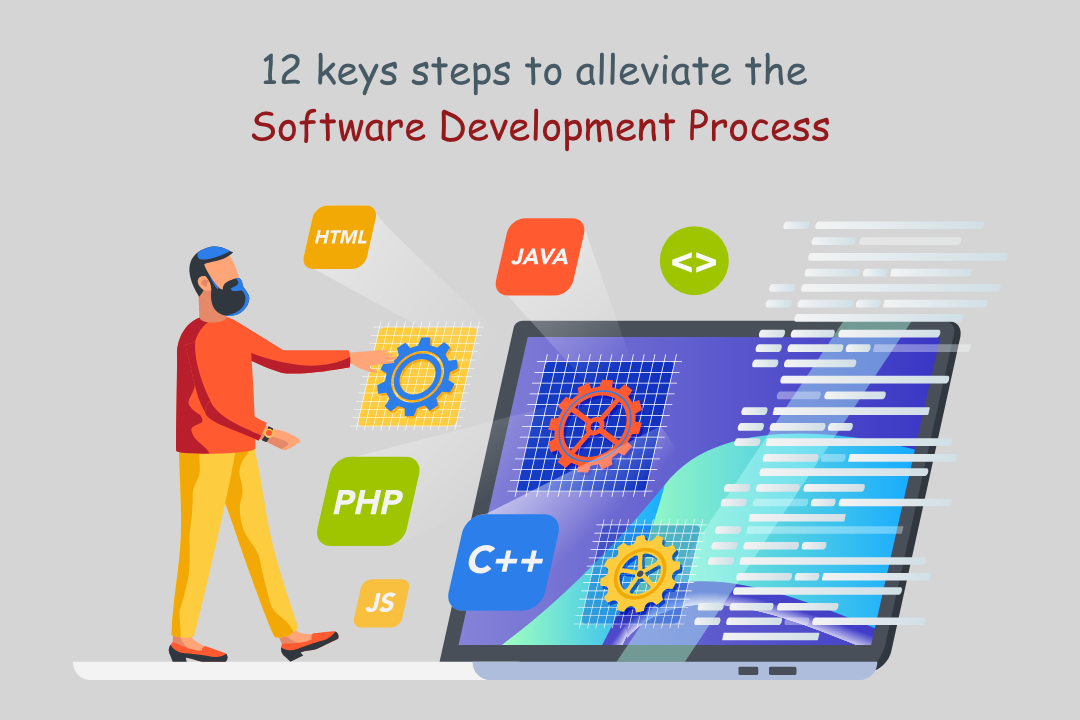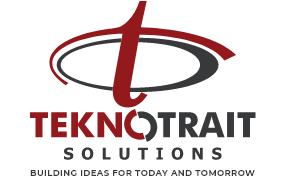
12 keys steps to alleviate the Software Development Process | Best tools 2020
If you’ve been in the Software Development space for even as little as a month, you’d know how much inclined the businesses are towards the use of technology to boost their organizational efficiency.
They leverage technology with the help of software tools to address modern-day problems, automate the manual labors involved in project management, designing, programming, software testing, or even maintenance and support of the existing applications.
The new age Software tools are multifarious.
They assist in all the activities of different phases of a Software Development Life Cycle.
So much so that some businesses have been known to be entirely dependent on software tools to manage their project.
This brings us to the Top 12 Tools to alleviate your Software Development Process:
1) Product Design:
Organizations aim to bring their products and applications to life through designs that deliver a significant user experience.
They also serve their customer’s purposes, through their platform, across the web, and mobile.
The most common design deliverables include high-fidelity mock-ups or wireframes along with designs for their pixel-perfect implementation across the application being developed.
The tools that you need to know in this space are:
- Figma
- Figma is a very popular and powerful prototyping tool that has been known to assist in building prototypes real quick. It allows users (team members) to collaborate on a real-time basis.
- It is quite intuitive and easy to operate the tool. It provides you with the option of having a team library with a set of UI interfaces that you could put to use while designing the prototype.
- One of the major features of this tool is that it is a cloud-based tool, meaning – you or your remote team member does not have to download even a byte’s design while working together on a prototype. You just have to click your way to a browser to access your prototype’s library.
- Figma is a very popular and powerful prototyping tool that has been known to assist in building prototypes real quick. It allows users (team members) to collaborate on a real-time basis.
- InVision
- InVision is a cloud-based digital product design and collaboration platform that enables software development professionals to design, create, and manage prototypes.
- Designing teams can easily share their feedback on the design itself rather than sending detailed emails or chatting about the changes to be made to the design.
- Through their Live Share feature, you could start a real-time interactive design meeting with your team, right in your browser – taking collaboration to the next level!
- You also have the option to create Self-Guided Tutorial videos on the designs that you’re working on, either to give an overview to the stakeholders or to ask questions to the business or product owners.
- It also has an inbuilt project management tool to track the status of the work, review them, assign them to concerned team members while also getting to view their History logs
- InVision allows you to import your designs from Photoshop, Sketch, or other designing tools and turn them into interactive designs for a range of latest devices available in their system.
- InVision is a cloud-based digital product design and collaboration platform that enables software development professionals to design, create, and manage prototypes.
- Adobe XD
- Adobe XD is a tool from Adobe Creative Cloud to help design teams to communicate and iterate on designs and prototypes super-fast. Here, you could design low and high-fidelity designs and switch to Prototype mode to create prototypes and validate the design.
- One of its features, Repeatable Grids, allows you to duplicate objects and auto-populate texts that could be required multiple times within a grid’s design. This saves a lot of soul-destroying-repetitive-activity-time spent on creating objects multiple times.
- Its Vector Drawing and Precision Design Tools can be used to create wireframes, icons, and layout and align artboards and grids.
- Adobe XD is a tool from Adobe Creative Cloud to help design teams to communicate and iterate on designs and prototypes super-fast. Here, you could design low and high-fidelity designs and switch to Prototype mode to create prototypes and validate the design.
2) Project Management
Project management is considered to be one of the most challenging facets of Software Development – juggling between managing the expectations of the clients and the stakeholders to working with various teams in the project to deliver the application within the defined schedule.
To remain within the schedule, the project managers must set up a process where you could efficiently collaborate with the teams and the stakeholders, track milestones, share project-related documents and accesses, delegate tasks.
Here are some of the widely used Project Management Tools that tick the above-mentioned boxes:
- JIRA
- Atlassian JIRA is one of the most flexible and powerful project management tools that connect team members and their project activities efficiently. It is very easy to navigate tool with a comprehensive dashboard that displays the Activity Stream and shows insights into the project on a real-time basis.
- Using JIRA, you could create simple tasks, log software defects, or introduce information about a new module or requirement in the project. You could also create Scrum and Kanban boards, Roadmaps to communicate the defined plans with the teams.
- With its Agile Reporting feature, JIRA enables the user to access over 10 innovative reports that give them real-time insight into the overall performance of the project.
- Atlassian JIRA is one of the most flexible and powerful project management tools that connect team members and their project activities efficiently. It is very easy to navigate tool with a comprehensive dashboard that displays the Activity Stream and shows insights into the project on a real-time basis.
- Trello
- Trello has been reviewed to be one of the smartest project management tools along with the likes of JIRA. The dashboard of Trello is made up of lists that represent the workflow of the project. Each list consists of cards that hold a variety of information about the tasks that have been created for the project.
- The card can be edited for adding members, checklists, due date, labels or can be moved, copied, or archived on the completion of the task. After the completion of a particular task, the card can be simply dragged and dropped on to the next list to indicate progress.
- Trello allows 3rd Party integrations that serve handy for users that are looking for add-ons to integrate extensions or plugins.
- Trello has been reviewed to be one of the smartest project management tools along with the likes of JIRA. The dashboard of Trello is made up of lists that represent the workflow of the project. Each list consists of cards that hold a variety of information about the tasks that have been created for the project.
- Basecamp
- Basecamp or the All-in-1-Toolkit-for-working-remotely, as it is fondly addressed by its customers, is a cloud-based shared space and a collection of tools to help teams to work together.
- Its main feature is to split the work into projects. You can customize the way you operate your project assignments and its schedule and create a list of tasks, assign them while setting due dates for them.
- Basecamp also has a free personal edition that allows you to have up to 3 projects, 20 users, and 1GB of storage space.
- Basecamp or the All-in-1-Toolkit-for-working-remotely, as it is fondly addressed by its customers, is a cloud-based shared space and a collection of tools to help teams to work together.
3) Communication
Studies across time have revealed that poor communication has been one of the primary reasons for project failures. It is important to identify and choose the right communication tools to boost the efficiency and effectiveness of your teams while facilitating team collaboration.
The basic features of a good Virtual Communication tool are virtual rooms or channels for team meetings, the option to exchange and share critical project files, data, updates, and progress.
These tools organize conversations, enable teams to work remotely across time zones, and are either available for free or can be licensed for a very reasonable price.
An easy to use UI, Video Calling, Threading, Screen Sharing, Notifications are some of the important features that you should look for in a communication tool. Slack, Microsoft Teams, Skype, Telegram are some of the sought-after communication tools.
4) Hosting Application Servers
The mechanism of deployment is to seamlessly deliver your application to your customers.
It is important to respond to your customer’s demands, as quickly, and enrich them with new features, as frequently as possible.
For as challenging as this may sound, speed and frequency can be administered by hosting your application on a Cloud-based infrastructure via the SaaS model.
Empower the virtualization of your application with a cloud-based solution.
With the cloud, you could significantly lower your Application Hosting cost by paying only for what you use, avail superior levels of security and compliance, scale the server resources, promote business continuity, improve the performance of your business application or website with incredible loading speed.
Content Management, Web Development, Database, and Email Management Applications are some of the types of Application Hosting Services.
Amazon Web Services, Microsoft Azure, Google Cloud, and Digital Ocean are some of the many Application Cloud Hosting Service Providers that are considered to be reliable and are recommended by a lot of developers.
5) Code Versioning / Management
While working on any software development project we make multiple revisions of the same unit of information while improvising, updating, fixing the bugs of the application.
These may include documents or source files or codes.
Through a version control system, you can manage your project team’s source code.
It tracks all the modifications that get made to the code which serves handy if a mistake is made, as the developers could always go back to the previous versions of the code and fix the code by comparing both the versions.
This minimizes a possible number of disruptions to the project and the team.
With a VCS, you may track all the changes that were ever made in the application with access to the information that describes the purpose and intent of the change.
Through Branching and Merging, you could collaborate with several strings of work that are autonomic from each other.
Github, Bitbucket, Gitlab are some of the renowned Version Control Software Tools available in the market.
6) Code Reviews / Code Coverage
The activity of reviewing and testing the source code is important to identify and detect bugs in the earlier stages of the software development process.
An effective code review prevents bugs and errors from sneaking into your project and affecting its standards, thereby improving the overall quality of the code.
The practice of reviewing the code should ideally happen before merging the code with the codebase.
There should be a minimal set of requirements to be met before submitting code review requests.
The reviewer of the code must ideally highlight the positive points of the code and also suggest constructive alternatives for the negatives.
Over the shoulder, email pass around, pair programming are some of the industry followed ways of performing code review.
Switching over to a code review tool automates the code review process while increasing its efficiency. Some of the powerful code review tools are SonarQube (formerly Sonar) and Fisheye.
7) Continuous Integration / Continuous Deployment
CICD allows software development and engineering teams to streamline their activities.
Since the deployment process is automated, it enables them to concentrate on business requirements, code security, and code quality.
It facilitates the delivery of code changes more securely at a quality speed.
A smart CICD tool grasps the project’s workflow to utilize automation while creating a strong CI/CD pipeline.
Jenkins and Bamboo are among the many CICD tools available in the market.
Jenkins is an open-source automation server, while Bamboo’s license can be bought based on the agents or build slaves.
8) Documentation
The Software Development process would be incomplete without documentation.
Documentation is very important to explain the workings of the project to the stakeholders and the fellow team members.
Documents can range from a simple ReadMe.txt file to complex project architecture and dataflow designs.
A software documentation tool eases out the task of creating and maintaining documents at the project level that could be accessed by all the concerned team members.
Confluence from Atlassian is a popular content collaboration tool that software development teams used to collaborate and share project knowledge in the form of documents and files efficiently.
Open Source tools from Google like Google Docs and Google Spreadsheets are also handy to use in development projects.
9) Bug Reporting
Identifying and detecting bugs is one of the important and critical aspects of the SDLC.
A bug tracking tool is useful in streamlining the testing process while it enables a Software Test Engineer to ensure the quality of the application while providing them with the ability to track the entire bug life cycle, right from logging the bug to tracking it till its closure state.
A typical bug tracking tool allows you to log bugs, describe detailed information about the issue, assign the issue to the concerned individual along with their priorities and severities, and enables the user to track, search, edit the issue as required.
JIRA from Atlassian and ASANA are a couple of widely used Bug Tracking Software.
10) Test Case Management
Small-scale teams always look to use spreadsheets to manage their test cases.
But as the scale of the team or the application grows the number of test cases would also grow to ensure maximum coverage.
Managing spreadsheets would become an enormous task at such times.
The use of a top-notch Test case management tool would facilitate the tracking, maintenance, and automation of the test cases.
A test case management tool provides you with a flexible and intuitive UI, which works quite efficiently across all the software development models.
You can easily create test cases, link, reuse, and group them in a structured format.
Besides, they also let you track the results of the tests on a real-time basis along with the generation of detailed test reports.
Zephyr, Test Rail, Test Link are considered to be efficient Test Case Management Tools available in the market
11) Cross Browser Testing
Cross Browser Testing compares and tests the behavior of the application or website across different browser environments.
This is to maintain the application from delivering an optimal user experience over its usage across all the browsers.
In this non-functional type of testing, you test if the application is functioning as required when it is accessed through several mobile devices, a range of browser-OS combinations, and assistive tools like screen readers.
CB Testing tools allow the users to snap screenshots, debug errors in real-time, and interact with the browser natively.
They also support automation tools like Selenium to automate various tests.
Browser Stack and Sauce Labs have been around for quite a while now and have proved to be efficient tools in the CB Testing space.
12) Functional Automation Testing
The purpose of Automated functional testing is to execute scripted test cases over a software application.
Although Manual Testing is important, it is likely to be time-consuming and conflicts with shorter development cycles that are practiced in the modern age.
FAT on the other executes the scripts to validate the functionality.
In the cases, where the outcomes don’t match the expected behavior the functions get summoned for review.
This significantly saves time thereby reducing the associated costs.
The factors to consider before selecting a Functional Automation Testing tool are programming language and the environment of development, the standard of reporting, support available for different platforms.
Out of all the automation tools available in the market, Selenium possibly stands out as the most popular open-source automated testing suite for web applications.
For Mobile, Appium (open source) is the popular choice among the testing community.


